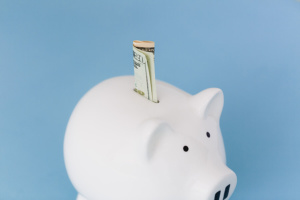
Editorial Note: This content was written by Midland Credit Management, a debt collector.
The IRS sent out more than 97 million tax refunds in 2017 and the average taxpayer received a refund between $2,000 and $3,000 each. What difference does it make if a small, teeny-tiny portion of next year’s tax refund check goes towards scoring you a set of custom golf clubs or limited-edition jewelry? It is your money, after all! Yes, it is your money, but being frivolous with this considerable amount of money is a potentially risky behavior. Start the new fiscal year off on the right foot by significantly reducing pre-existing debts and financial obligations – all courtesy of the IRS!
 1. Pay Outstanding Debts
1. Pay Outstanding Debts
Consider taking the biggest chunk of your tax return and putting it towards reducing your monthly student loan payments or credit card debts. Defeat the high-interest debt that comes with using credit cards by paying off as much of the outstanding balance as possible in one go. Often, when you lower the outstanding balance on the credit card, you will see a significant drop in the amount quoted in your monthly interest repayments. You may be able to avoid additional interest from creditors by reducing or eliminating credit card balances as soon as possible.
2. Save for a Rainy Day

Up one day and down the other, the fickle nature of the nation’s economy has everyone worried about having enough money to survive unemployment, personal tragedy, or a natural disaster. Sometimes a simple visit to the emergency room can snowball into an uncontrollable avalanche of unexpected expenses. Stop worrying and take action; consider setting up an emergency fund with a portion of your tax return. Try starting your emergency fund with a $1,000 deposit at the start of the fiscal year. Many financial experts recommend keeping at least 3 to 6 months’ worth of salary in an “emergency-only” savings account to cover vital living expenses like rent, food, fuel, and clothing.
 3. Add to Your Mortgage Offset Account
3. Add to Your Mortgage Offset Account
Another lesser known way to get the most out of your upcoming tax refund is to deposit it directly into your mortgage offset account. Most mortgage providers offer their customers the option to use a type of a savings account, called a mortgage offset account, to automatically deduct the offset account balance from the outstanding mortgage loan balance. The difference is used by the mortgage provider to calculate the interest on the customer’s mortgage payment. Consumers often end up paying less interest on their outstanding mortgage loan and usually end up paying off home loans much faster than other traditional payment options.
4. Invest in Your Career
 You may want to think about heading back to school and investing in yourself with part of your tax refund. Enrolling for professional training or a certification will not only boost your knowledge, but it will also increase your ability to command a higher salary and secure greater job stability in the near future. If you are hard-pressed for time, consider signing up for membership with a professional organization or attending an industry-related conference with plenty of opportunities for networking.
You may want to think about heading back to school and investing in yourself with part of your tax refund. Enrolling for professional training or a certification will not only boost your knowledge, but it will also increase your ability to command a higher salary and secure greater job stability in the near future. If you are hard-pressed for time, consider signing up for membership with a professional organization or attending an industry-related conference with plenty of opportunities for networking.
A tax refund is a great opportunity to improve your financial standing and set yourself up for a better future. Investing in one of these options will make sure your tax refund benefits you not just now, but in the months and years to come.
*Although we hope these tips are helpful to you, Midland Credit Management and Repay Reports do not offer financial advice. If you have questions or concerns about your personal finances, please speak to a financial advisor.
*Please understand that this is a communication from a debt collector. This is an attempt to collect a debt. Any information obtained will be used for that purpose.
